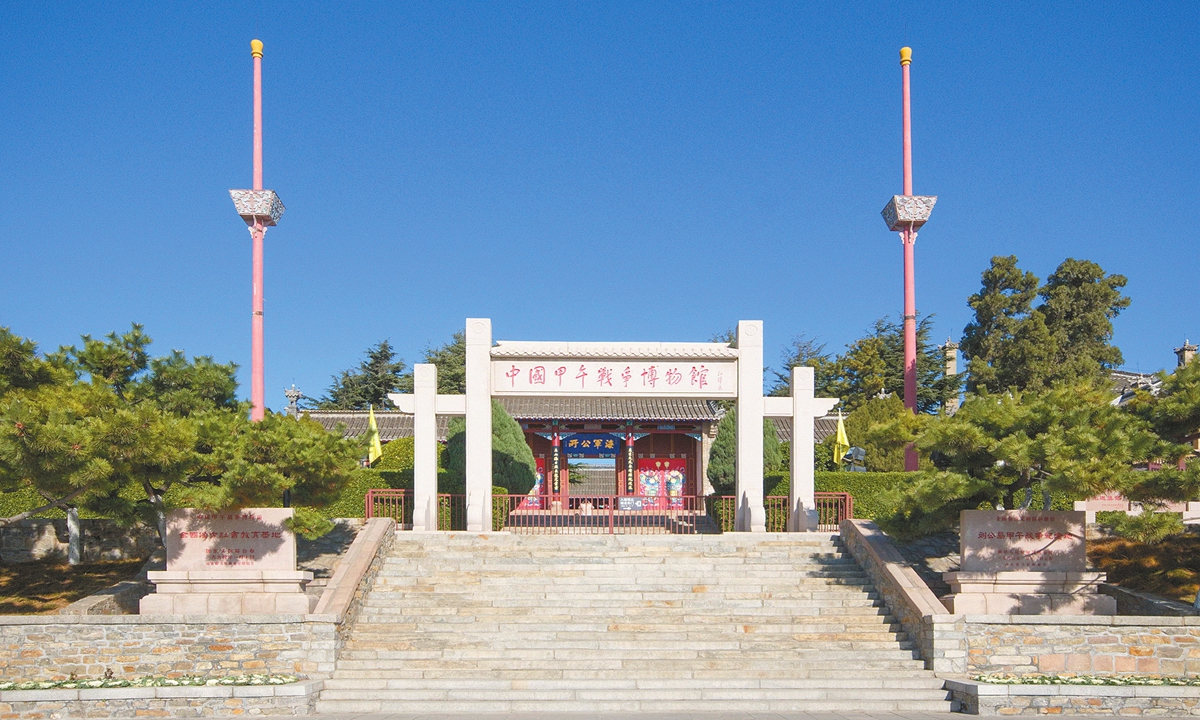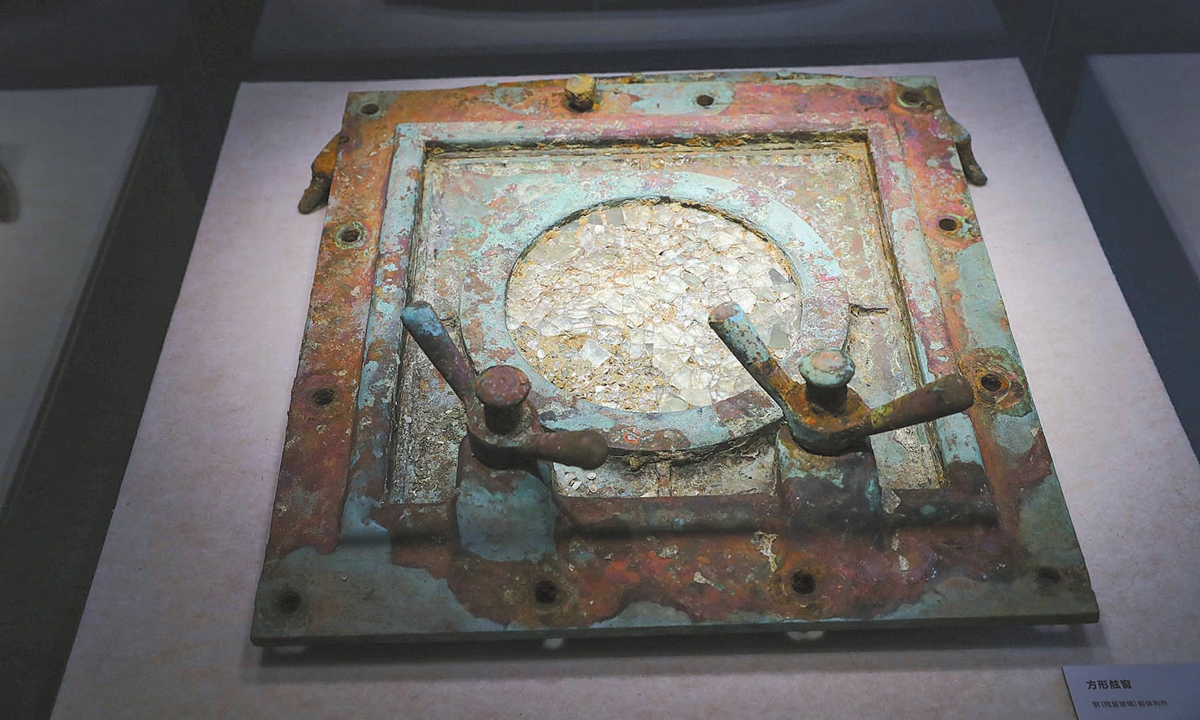ARTS / CULTURE & LEISURE
China-UK maritime ties revealed in recent discovery
Historic find

An exterior view of the Museum of the Sino-Japanese War of 1894-95 in Weihai, East China's Shandong Province Photo: IC
In a remarkable historical discovery coinciding with the 130th anniversary of the Sino-Japanese war of 1894-95, a new grave of the Qing Dynasty's Beiyang Fleet has been unearthed at St. John's Cemetery in Newcastle, the UK.The tombstone was uncovered by PhD candidates Yu Jiarui at Durham University and Qi Yongqiang, president of the Northern Britain Chinese Entrepreneurs Association. It marks the sixth documented grave of Beiyang Fleet personnel at the cemetery. The grave, belonging to a civilian member of the fleet surnamed Gan, who passed away on August 7, 1887 during Emperor Guangxu's reign (1871-1908), sheds light on a lesser-known chapter of Chinese naval history in Europe.
A hidden piece of history
Before this discovery, five graves of Beiyang sailors were discovered in St. John's Cemetery. These sailors were part of a mission to the UK to receive warships ordered by the government of the Qing Dynasty (1644-1911), including vessels like the Chaoyong, Yangwei, Zhiyuan, and Jingyuan. Tragically, five sailors died of illness during their stay in the UK in 1881 and 1887, and were buried at the cemetery.
Gan's grave, however, had remained undiscovered for over a century. His tombstone reveals that he, like the others, traveled to the UK to assist with the fleet's mission but passed away aboard the Jingyuan. Unlike the other five sailors, Gan was a civilian, which adds a new dimension to the historical narrative of the Beiyang Fleet's activities in Europe.
"Historical research can never gather all the materials from the world, so it's crucial to cherish the materials we can access and explore them thoroughly without missing any details," Yu told the Global Times, explaining how he came across burial records in the Tyne and Wear Archives that pointed to the existence of Gan's grave.
After conducting field surveys from May to September 2024, Yu and Qi located the tombstone, which had been partially buried.
"The cemetery is quite large, covering 28 acres and containing over 100,000 graves. However, once we narrowed down the area using the section and plot numbers, finding the sixth Chinese grave became less difficult," Yu explained.
The grave, partially buried with its inscription hidden, was eventually found in September 2024.
Its distinct obelisk shape and different inscription style had caused it to be overlooked.
This suggests that the repairs made when Admiral Cheng Biguang revisited Newcastle in 1911 can be further researched. Additionally, Gan's tombstone lacks some features found on the other graves, leading to speculation about possible repairs made when Admiral Cheng visited Newcastle in 1911.
While Gan's grave has been found, much about his life remains a mystery.
It is known that he was a scholar who held the rank of xiucai, a term used to describe educated youth in ancient China, making him the most senior and educated among the six individuals buried at St John's. However, his personal life and exact role within the fleet remain unclear. Researchers believe further investigation into records in China could provide more insight.
Some scholars have since proposed that Gan might have been a doctor, a civilian role that would have distinguished his interactions with the British from those of military personnel. This discovery has sparked renewed interest in the civilian contributions to the Beiyang Fleet's mission in Europe, highlighting the diverse nature of the fleet's presence abroad.

One of the square portholes that are unique to the Zhiyuan and Jingyuan ships at an exhibition at the China Port Museum in Ningbo, East China's Zhejiang Province Photo: VCG
Deeper connectionsThe discovery of Gan's grave is part of a broader effort to document the Beiyang Fleet's activities in Europe.
Throughout the 1880s and into the early 20th century, the fleet maintained an extensive presence in the UK and other parts of Europe. Sailors trained at naval academies, purchased ships, and engaged with local communities. Historical records indicate that the sailors developed close ties with the people of Newcastle by attending events and even being featured in local newspapers.
St. John's Cemetery, where the sailors rest, has become a symbolic site for the shared history between China and the UK. In December 2016, the National Cultural Heritage Administration entrusted the China Foundation for Cultural Heritage Conservation to conduct restoration work on the sailors' graves, which was completed in December 2018.
In recent years, it has attracted attention from Chinese expatriates, students, and historians who come to pay their respects and learn more about this chapter of Chinese naval history.
The Northern Britain Chinese Entrepreneurs Association is actively involved in the restoration and preservation of these graves. Each year, the local Chinese community holds memorial events at the cemetery during the Qingming Festival in April, honoring the Beiyang sailors and educating visitors about their legacy.
On September 17, the 130th anniversary of the sinking of the Beiyang Fleet cruiser the Zhiyuan, Tang Rui, the Chinese Consul General in Manchester, visited St. John's Cemetery to pay his respects at the sailors' graves. His visit underscored the importance of remembering the sacrifices of the Beiyang Fleet and highlighted the deeper cultural and historical connections between China and the UK.
"We got a lot of support from the UK and China, which gave us much guidance in terms of future work," Qi told the Global Times, adding that local British people have also expressed great interest in the graves' significance, "recognizing them as symbols of Newcastle's once-prominent role in international naval history and a testament to the enduring relationship between China and the UK," Qi added.
The discovery of Gan's grave has reinvigorated research into the Beiyang Fleet's time in the UK. Scholars hope it will inspire further exploration into the lives of the sailors who traveled halfway across the world but never returned home, and preserve their legacy for future generations.
